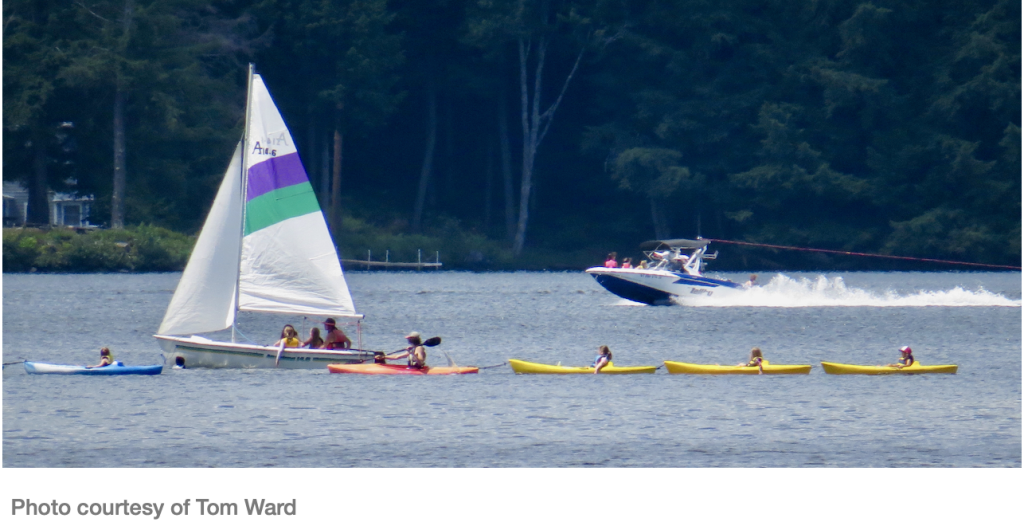
Much of Vermont belongs to the people. We share in common the Green Mountain National Forest (400,000 acres), our State Parks (43,000 acres), and our State Forests (345,000 acres). The people own the public schools, the public highways, and the State Colleges and Universities. Vermonters in common also own the lakes and ponds, 800 of them, covering more than 300,000 acres of public waters. All these resources are held in trust for all of us, and the generations to come, to enjoy together.
We regulate what people can do in each place to preserve this enjoyment. You may not drive a bulldozer through the state park. You may not light up a cigar in a crowded kindergarten classroom. You may not swerve across the lanes at 100 miles per hour on the highways. You may not park your pickup with RV attached on Main Street in Montpelier for a week. You may not send your sewerage into the lakes and streams. We have learned over the years that these regulations are necessary to preserve and protect our valuable common resources.
In crafting these regulations, Vermonters have wisely applied the general principle that people are free to do whatever they wish in these public spaces as long as it does not infringe on the enjoyment of others. When a new technology comes along, we apply this principle, and regulate as necessary. After jet skis appeared on our lakes in the 1980s, we passed laws to restrict them to lakes of 300 acres or more, and to the daylight hours. When personal drones arrived a decade ago, we restricted them to where they would not interfere with aircraft or spy on the neighbors. We the people, in democratic fashion, voted to enact sensible regulation of these new devices.
Today, on many of our lakes, a new type of boat has recently appeared, one that creates a four-foot artificial wave on which a rider may surf — on a surfboard as if they were out on the ocean. This new technology, as you might imagine, can have damaging effects on our lakes and on the people who enjoy them. They stir up bottom sediments, erode the shorelines, preclude paddlers and swimmers from enjoying the lake safely, and contribute to the spread of invasive species and potentially-toxic blue-green algae.

The question now before us is how best to apply the principle described above to this new technology.
Currently, wake surf boats may practice their sport on all 73 lakes that allow motorboats, from 278,000-acre Lake Champlain to 79-acre Center Pond in Newark. A total of 318,000 acres of lake are at their disposal. Their only restriction is to slow down to no-wake speed — less than five miles per hour — when they are closer than 200 feet from shore, other boats, docks, and swimmers, as all motorboats must.
Responsible Wakes for Vermont Lakes, a citizens’ group of lake users, has petitioned the state to keep wake surfing 1000 feet from shore in water more than 20 feet deep. The effect of this regulation would be to protect 14,000 acres from these boats, mostly on our smaller lakes, amounting to about 4% of the total acres available. The wake-boaters would still have more than 300,000 acres of lake to work with. This sensible regulation allows wake boaters to enjoy this new sport on the public waters of the Green Mountain State, but puts reasonable limits on how they infringe on the enjoyment of others.
Please support the RWVL’s petition by making your voices heard locally and at the State’s last public meeting to be held in Montpellier in June or July.
